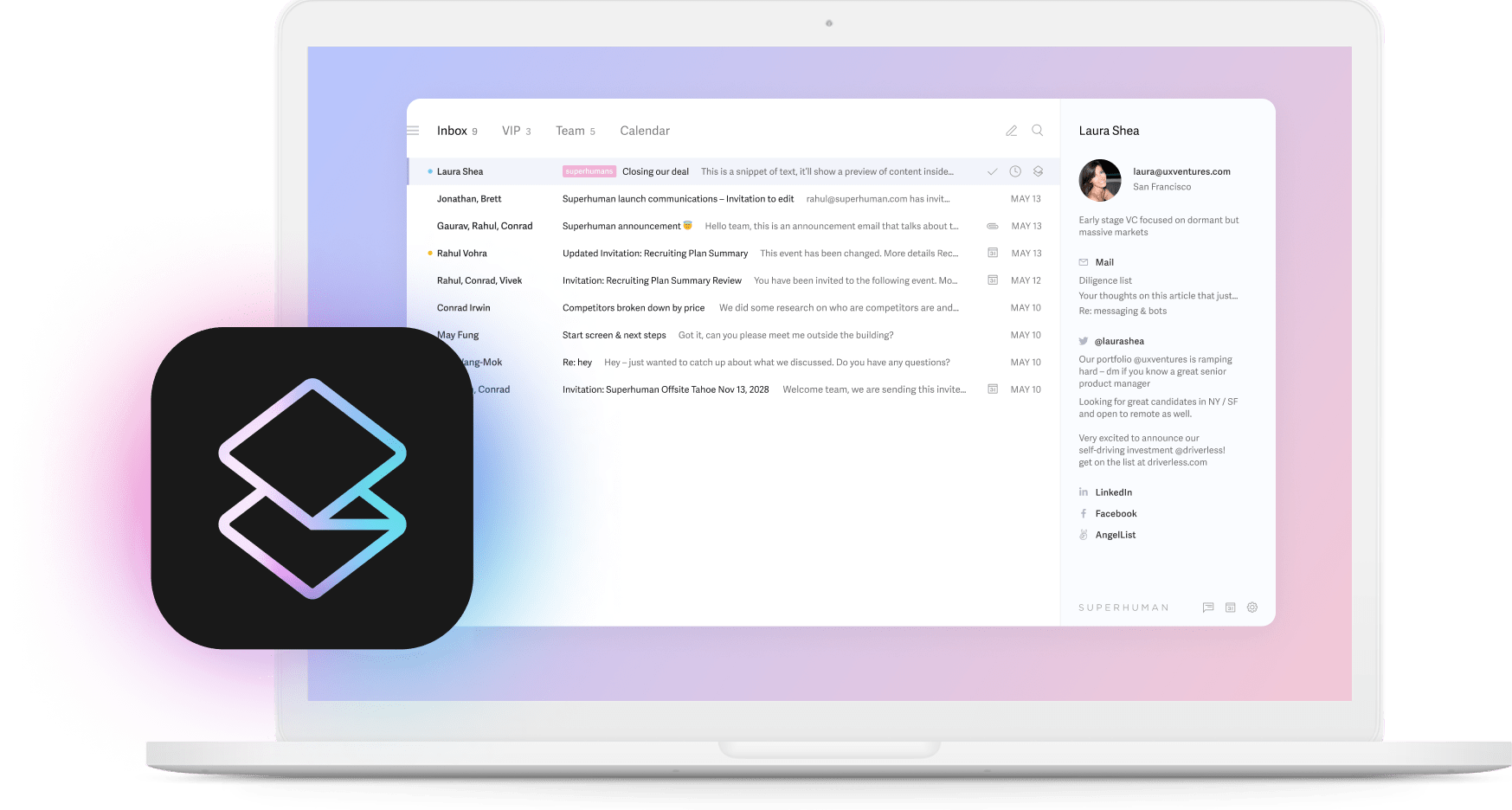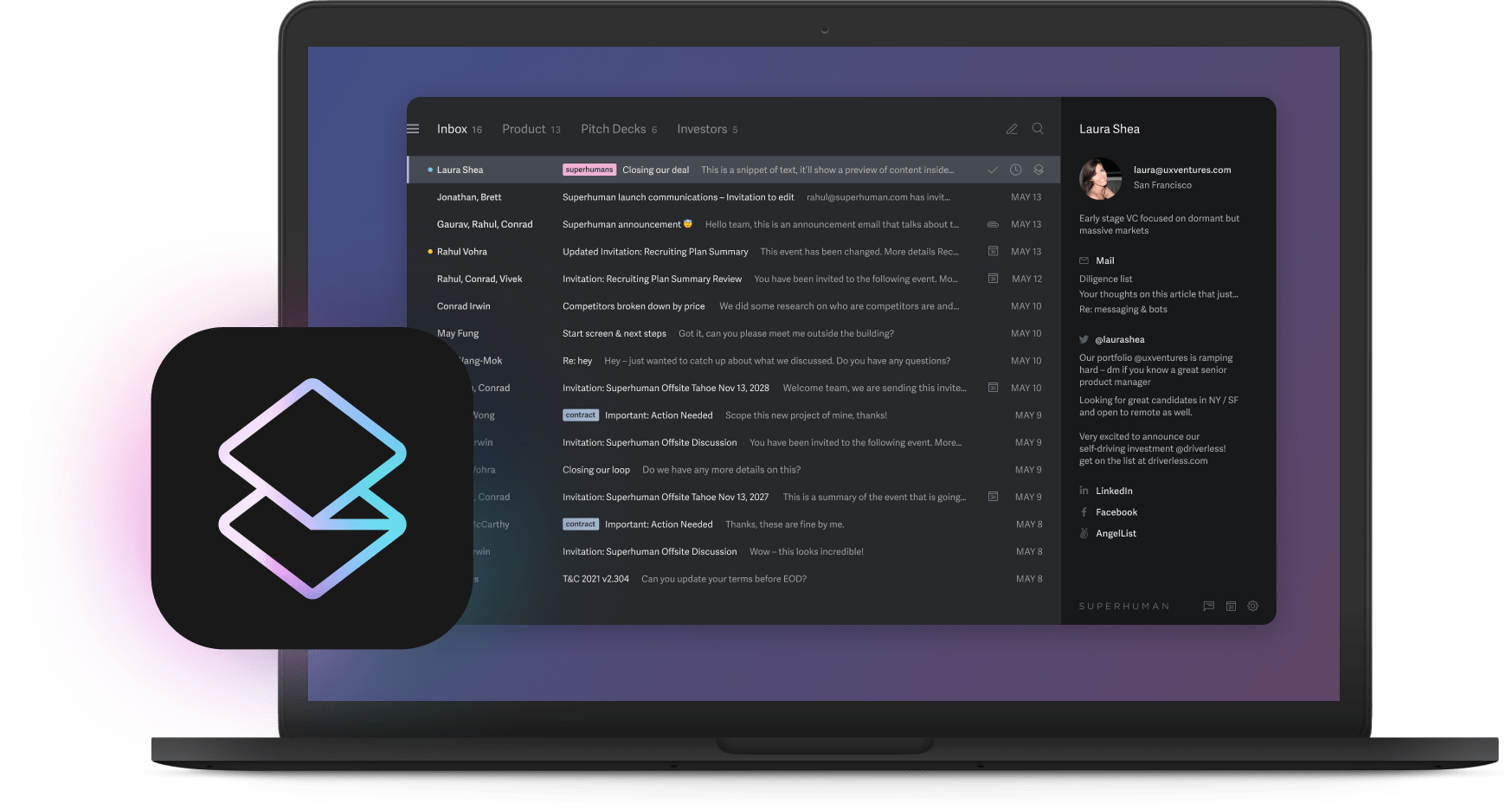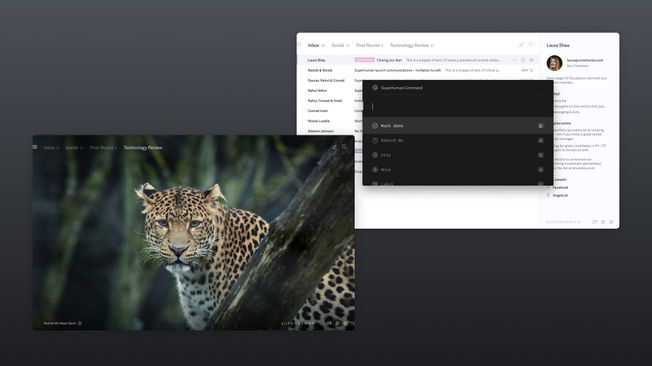
Your phone buzzes at 5:47 a.m. Three board members need answers. A key customer threatens to churn. Your lead engineer just flagged a critical bug. Welcome to another morning as a high-growth CEO.
You know those morning routine articles promising transformation if you just wake up at 4:30 and journal for an hour? They miss something crucial. When you're running a company in hypergrowth, your inbox doubles annually. Crises land before coffee. The meditation advice from lifestyle bloggers crumbles the moment overnight escalations flood your screen.
This playbook takes a different approach. You'll get three frameworks built for business impact: the Crisis-Ready 30-30-30 Model, the AI-Augmented Decision Stack, and the Personal Energy & Bandwidth Audit. Each framework helps you protect cognitive bandwidth, accelerate decision cycles, and keep your company moving when everything feels urgent.
Every tactic comes from research and real CEO schedules, not productivity-influencer hype. The goal is simple. Help you make better decisions faster, so your next choices move the needle, not just the clock.
The productivity-porn problem: why most morning routine advice fails
Popular morning routine advice touts early rising, meditation, and strategic planning. The people writing it haven't navigated the stakes of leading a fast-scaling company.
Mainstream pieces present aspirational routines that ignore what CEOs actually face. Board pressure, team scaling issues, communication overload, and crisis management. These challenges exist far from the controlled environments that typical morning advice assumes. Your inbox volume can double annually in hypergrowth. That peaceful hour of strategic thinking vanishes when European investors need answers before their day ends.
The mismatch happens because generic advice doesn't consider environments where priorities shift hourly. Growth-stage leaders can't afford rigid morning rituals with lengthy meditation or elaborate planning. You need adaptable frameworks that directly address business challenges.
Think about it. Your biggest competitor just raised $100M. Your lead engineer texts about a critical bug at 5:45 a.m. You need pragmatic, flexible frameworks to tackle challenges head-on. Your morning routine needs impact, not aesthetics.
What really happens between 5 a.m. and 9 a.m. in high-growth firms
Your phone lights up before sunrise. Overnight emails, Slack pings, board texts. For high-growth CEOs, early morning means triage, not quiet reflection.
Most leaders wake between 5 and 6:30 a.m. to find messages from European investors, Asian customer escalations, and automated alerts from last night's deploy. Information overload hits immediately. Your inbox feels exponentially more crowded than last year. Each message demands attention, yet only a handful move your company forward. You're sifting signal from noise while cognitive stamina drains with every low-value thread.
Then surprises hit. A production outage. A key hire's sudden resignation. An investor demanding a pre-market update. All before your team logs on. Crisis management experts confirm the first hour is decisive. Delayed action amplifies cost and reputation damage.
This reality sits far from mainstream advice about leisurely meditation or phone-free mornings. High-growth environments reward CEOs who convert pre-9 a.m. windows into structured sprints of scanning, deciding, and communicating. The frameworks that follow match exactly that pace.
Framework #1: the crisis-ready 30-30-30 model
You need a routine that survives chaos, not peaceful sunrises. The 30-30-30 model breaks your first 90 minutes into three focused sprints pushing vital decisions out before your company logs on.
First, spend 30 minutes on your Situational Scan. Sweep board emails, overnight customer escalations, and NPS alerts. The goal is visibility, not action. Time-boxing the scan prevents inbox sprawl while catching signal in the noise. Crisis-response playbooks show structured first-hour check-ins reduce missteps during high-stakes events.
Next, dedicate 30 minutes to High-Impact Decision Drafting. Pick two or three calls that unblock the most revenue or risk. Forget the generic "Eat the Frog" mantra. Draft concise action notes, alternatives, and data points. This mirrors phased triage where rapid, structured decisions stabilize volatile situations.
Your final 30 minutes focus on Stakeholder Alignment. Fire off drafted decisions to functional leaders, ping critical investors, and pre-schedule brief stand-ups. Do this while energy remains high to prevent midday bottlenecks where teams await your green light.
Remote or in-office, the cadence stays identical. On site, pull your COO and head of product into quick huddles. Remote, use dedicated Slack channels and shared docs that timestamp decisions. Several CEOs credit this tight loop with slashing response time during launch-day outages.
The 30-30-30 model obsesses over speed. You're not perfecting mindfulness rituals. You're clearing blockers so the company moves while rivals sip coffee.
The 30-30-30 implementation guide
To implement this framework effectively, consider these practical steps for each phase.
Situational scan
Create an inbox filter labeled "Board & Incidents." Split Inbox automatically categorizes emails, spotlighting high-priority messages from executives and critical tools, letting you triage in seconds. Skim only subject lines and flagged metrics, parking everything else.
High-impact decision drafting
Use this template: Context, Options, Likely Outcome. Limit yourself to three bullets each. Draft inside a collaborative doc where your team can see decisions in real-time, keeping chat notifications muted. Tools like Coda let you create living documents that combine decision tracking with automated workflows.
Stakeholder alignment
Schedule auto-send emails for 9 a.m. local time respecting time zones. Before sending critical updates, run them through your company's tone guidelines to ensure consistency. If new crises land mid-block, restart the cycle rather than abandon it. The structure becomes your safety net.
Stay flexible. When travel or outages shatter schedules, compress blocks to 20 minutes each. The point is rhythm, not rigid ritual.
Framework #2: the AI-augmented decision stack
Your AI-native decision stack turns overnight data surges into crisp, confident choices before teams log in. Industry-leading companies are 38% more likely to use email apps beyond Gmail and Outlook. High-growth CEOs report saving up to 60 minutes every morning letting automation triage input and surface what matters.
The stack runs three tight loops. Data ingestion pulls from email, Slack, CRM, and dashboards while you sleep. Split Inbox funnels critical conversations into single views so noise never dilutes urgency. Board pings, customer escalations, NPS drops land in organized priority folders.
AI summaries come next. Auto Summarize distills long email conversations within seconds. Tools like Perplexity condense industry news into three-sentence briefs. You get context without scrolling.
Decision snapshots close the loop. One-page briefs pair summaries with next-step options, owners, and deadlines. Many CEOs drop these snapshots into standing 8 a.m. syncs so teams move before competitors react. Smart leaders maintain living decision logs where past choices inform future strategies, tracking which calls delivered results and which need course correction.
The impact is measurable. Teams using Superhuman save 4 hours weekly and respond 12 hours faster because inbox friction disappears. Your inbox feels lighter. Workflows become effortless. Superhuman customers using AI save 37% more time than those who don't.
Worried about hallucinations? Keep summaries focused on verifiable data, require human sign-off for strategic calls, and route sensitive material through private models. The payoff is calmer minds, shorter meetings, and room for decisions only you can make.
AI decision support in practice
Start by pairing Split Inbox with Auto Summarize for core email flow. Add research agents like Perplexity for market scans and custom GPTs piping KPIs into morning briefs. Create a unified dashboard where all these metrics live alongside your OKRs and team progress, eliminating tool-switching during morning reviews. Trigger each step with simple automations so briefs land by 7 a.m.
Pilot the flow with one executive assistant first. Track time saved and refine prompts cutting fluff. If summaries feel thin, click into source conversations for instant context. Keep human override, but let the stack handle heavy lifting. AI implementations typically require several weeks to months before measurable results appear.
Framework #3: the personal energy & bandwidth audit
Every decision between now and lunch rides on cognitive, emotional, and calendar capacity remaining when Monday begins. This audit gives actionable data points optimizing your performance.
Assessment starts with three quick measurements. First, your cognitive load score. Before opening your inbox, rate mental freshness on a 1-5 scale. CEOs tracking this figure quickly spot links between low scores and poor calls later in the week.
Next, create calendar heat maps color-coding last week's schedule. See where meetings spiked and deep-work blocks vanished. When leaders visualize time, they reclaim high-energy slots for strategy instead of status updates.
Finally, capture emotional load notes. Two sentences journaling about mood and stress. Consistent journaling sharpens self-awareness and reduces reactive decisions. Many leaders find it transformative.
Cold plunges might trend on social feeds, but this three-metric snapshot gives actionable numbers, not placebo rituals. It tells you whether to postpone high-stakes financing calls, delegate product discussions, or block ninety minutes for focused work.
Your quick Monday checklist runs like this. Rate cognitive load while coffee brews. Export last week's calendar, adding red for meetings, green for focus, yellow for travel. Write two lines on mood drivers. Adjust the coming week moving key decisions to green zones, outsourcing yellow churn, protecting sleep. Seven hours minimum remains non-negotiable for sharp decision-making.
Leaders following this routine during fundraising sprints report staying decisive on 80-hour weeks. They allocate sharpest hours to calls moving valuation, not vanity.
The AI toolset that actually saves time (not creates overhead)
If an AI app doesn't save at least 30 minutes before your first meeting, drop it. These four tools clear space for strategic work, integrating seamlessly with frameworks above.
Superhuman's AI-native inbox triage transforms overnight chaos into organized priority folders. Teams save 4 hours weekly and respond 12 hours faster, so Situational Scans start with only messages that matter. Auto Drafts and Instant Reply mean waking to inboxes where emails already have draft replies, slashing morning email sprint time.
Perplexity or xAI builds competitive intelligence reports while you grab coffee. Drop summaries directly into Decision Snapshots for instant market context.
Motion and Clockwise apply identical principles to calendars. Their AI reschedules low-value meetings, creates focus blocks, eliminates duplicate invites. Users gain substantially more time for high-impact tasks.
For written communications, AI-powered writing assistants ensure your rapid-fire morning emails maintain professional polish. Tools like Grammarly catch tone issues when you're rushing, suggest clearer phrasing, and maintain consistency across all stakeholder groups. CEOs report saving 15 minutes daily just on email editing.
Custom GPT agents connect directly to CRM and finance data. 61% of CEOs see generative AI as their next competitive advantage. They credit automated executive dashboards with faster, confident decisions during Stakeholder Alignment.
Choose apps hiding complexity instead of creating new tabs. Tools requiring daily prompt engineering or manual cleanup trade one bottleneck for another. Your goal: lighter inboxes, automated briefings, self-healing calendars, and dashboards updating themselves.
Quick-start integration checklist
Follow these steps implementing AI tools safely and effectively.
Run security reviews with CTOs and legal teams before granting inbox, calendar, or data access. Pick five-person pilot groups tracking minutes saved with simple before-and-after time audits. Build a central implementation tracker combining adoption metrics, feedback, and ROI calculations in one place. Define success metrics like inbox zero time, meeting hours reclaimed, or decision turnaround. Set 30-day rollout timelines with weekly checkpoints, documenting wins in shared workspaces where teams can see progress. Expand company-wide only after pilots show at least 30 minutes saved per person daily.
Warning signs your morning routine is costing you millions
When morning rituals become hurdles, every minute of hesitation ripples through your company. Here are red flags signaling your routine needs overhaul.
The first warning sign hits when you can't make decisions before completing personal rituals. At CEO pay scales, small amounts of lost decision-making time weekly easily amount to six figures annually.
Teams stalling while waiting for you to come online creates the second red flag. Delayed approvals push product launches back, draining momentum and morale. Your morning meditation might feel centering, but creates bottlenecks costing real money. Consider setting up automated approval workflows for routine decisions, freeing your mornings for strategic thinking.
Market shifts pass unnoticed when replies sit in draft folders because you're not online early enough. Slow responses forfeit renewals or investor confidence worth millions. While you're optimizing morning walk routes, competitors capture opportunities.
Communication gaps erode culture faster than any crisis. When you miss early check-ins, team leaders start guessing instead of executing. Uncertainty spreads through organizations like wildfire. No amount of mindfulness fixes fractured trust. Having consistent, well-crafted communication templates ensures your messages land with clarity even when time is tight.
The final warning sign appears when you spend more time tweaking routines than acting on strategy. While most CEOs recognize AI as their competitive edge for coming years, tinkering with habits diverts focus from that leap forward.
Here's your quick self-assessment. At 9 a.m., can you list your top three decisions for the day, confirm each team is unblocked, and send a customer email in under one minute? If not, your routine needs rebooting.
Designing a routine that survives 80-hour weeks
When calendars look like Tetris games, rigid checklists fall apart fast. Routines that work have three moving pieces adapting to current demands.
Your must-haves form non-negotiable foundations: seven hours sleep, protected thinking blocks before 9 a.m., and one quick health habit like 20-minute workouts. These aren't luxuries. They're baselines for cognitive function.
Flex time includes exercise, family breakfast, or journaling you can move or cut short without stress. Many executives shift workouts to lunch during product launches but keep recovery habits going.
AI shortcuts give back 30-60 minutes every morning. Superhuman's inbox rules, Auto Summarize for overnight emails, and Split Inbox sorting priorities become even more critical during crunch periods. During fundraising, double strategic thinking blocks and lean harder on automated tools. In quieter periods, bring back longer workouts. When traveling, set up automated triage so teams never wait for decisions.
Focus on high-impact actions over checking boxes. Your performance stays steady even working 80-hour weeks.
Rapid-fire myth busting: copying Bezos, cold plunges, and other distractions
Scroll any founder forum and you'll find identical rituals recycled as gospel. Most look great on Instagram yet crumble when teams ping you at 6 a.m. with production outages. Here are the biggest myths to drop now.
Bezos' thoughtful, deliberate decision-making feels luxurious, but scale-ups need swift decisions and Slack replies, not time-consuming reflection. When managing hypergrowth, those precious morning hours can't be locked from your team.
Phone-free mornings sound mindful until Asia-based customers threaten churn and wait hours for direction. Your inbox doesn't respect meditation schedules.
Cold plunges and extreme wellness hacks carry little proven business impact. The hype around morning routine myths shows ROI is mostly placebo. Dawn workouts work for some, yet forcing 5 a.m. lifts after four hours sleep wrecks cognitive sharpness. Research on early rising myths confirms what you know. Exhausted leaders make terrible decisions.
The truth? Perfect routines don't exist. Context, energy patterns, and company stage matter more than copying anyone else. Your Series A needs differ vastly from predictable Fortune 500 schedules.
Trade viral templates for evidence-based habits keeping you decisive, rested, and available when teams need you most.
Final takeaways: optimize for decisions, not aesthetics
Your morning routine works when it speeds decisions. The Crisis-Ready 30-30-30 Model gives clear 90-minute playbooks. The AI-Augmented Decision Stack turns overnight data into instant briefs. The Personal Energy & Bandwidth Audit keeps calendars aligned with peak performance. Together, they replace vanity rituals with systems protecting focus and helping you move faster.
AI-native tools change everything. Superhuman's Split Inbox and Auto Summarize clear low-value emails in minutes while custom GPT agents surface live KPIs. Most professionals expect AI to drive at least 3x productivity increases within 5 years. When AI handles triage and synthesis, you save mental bandwidth for calls shaping valuation, hiring, and runway.
Measure routines by time saved and decision speed. Teams using productivity-focused AI tools reclaim hours weekly and respond to twice as many emails in identical timeframes. Your inbox awaits an upgrade helping you fly through decisions that matter for your company's future.





